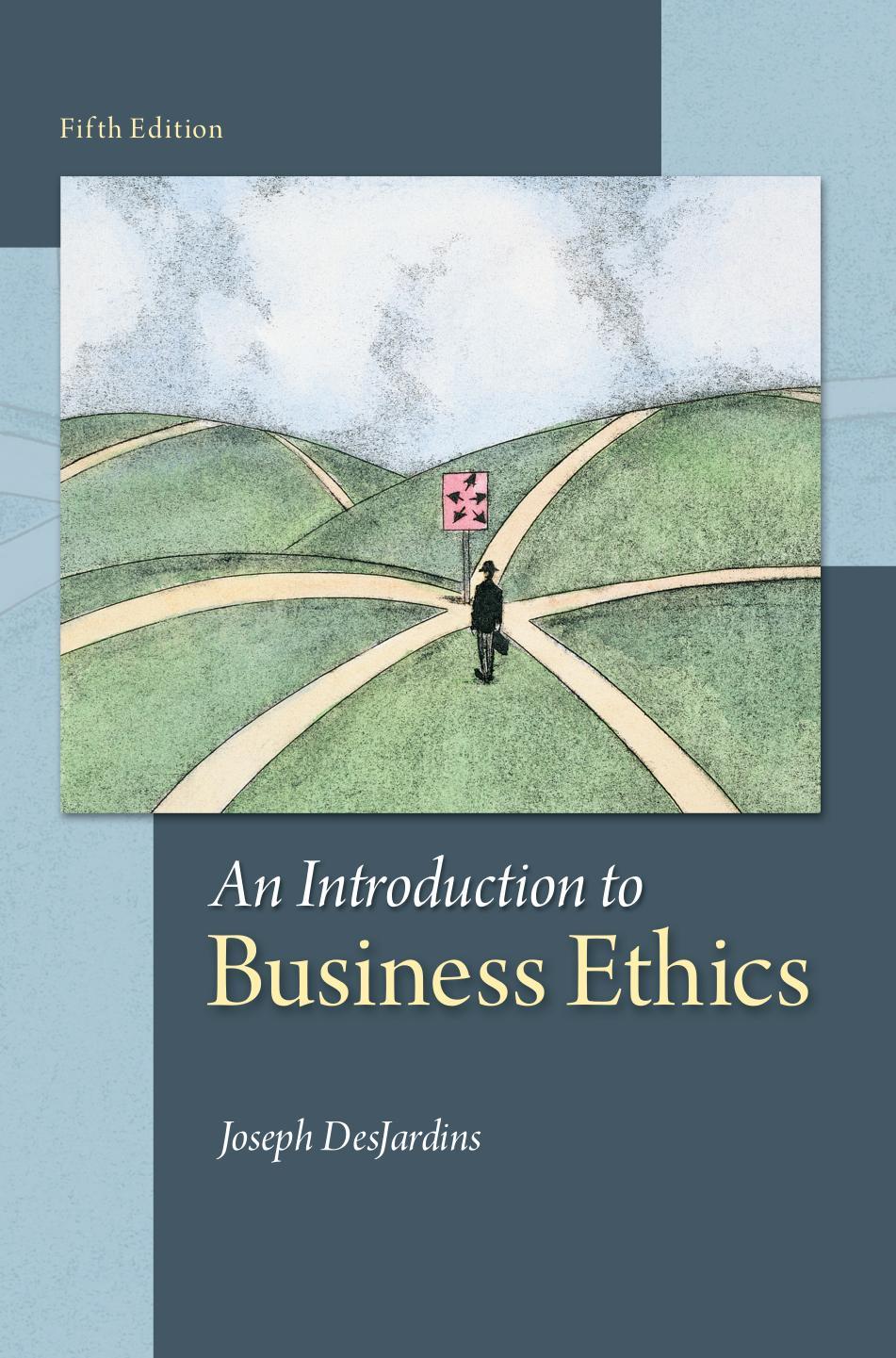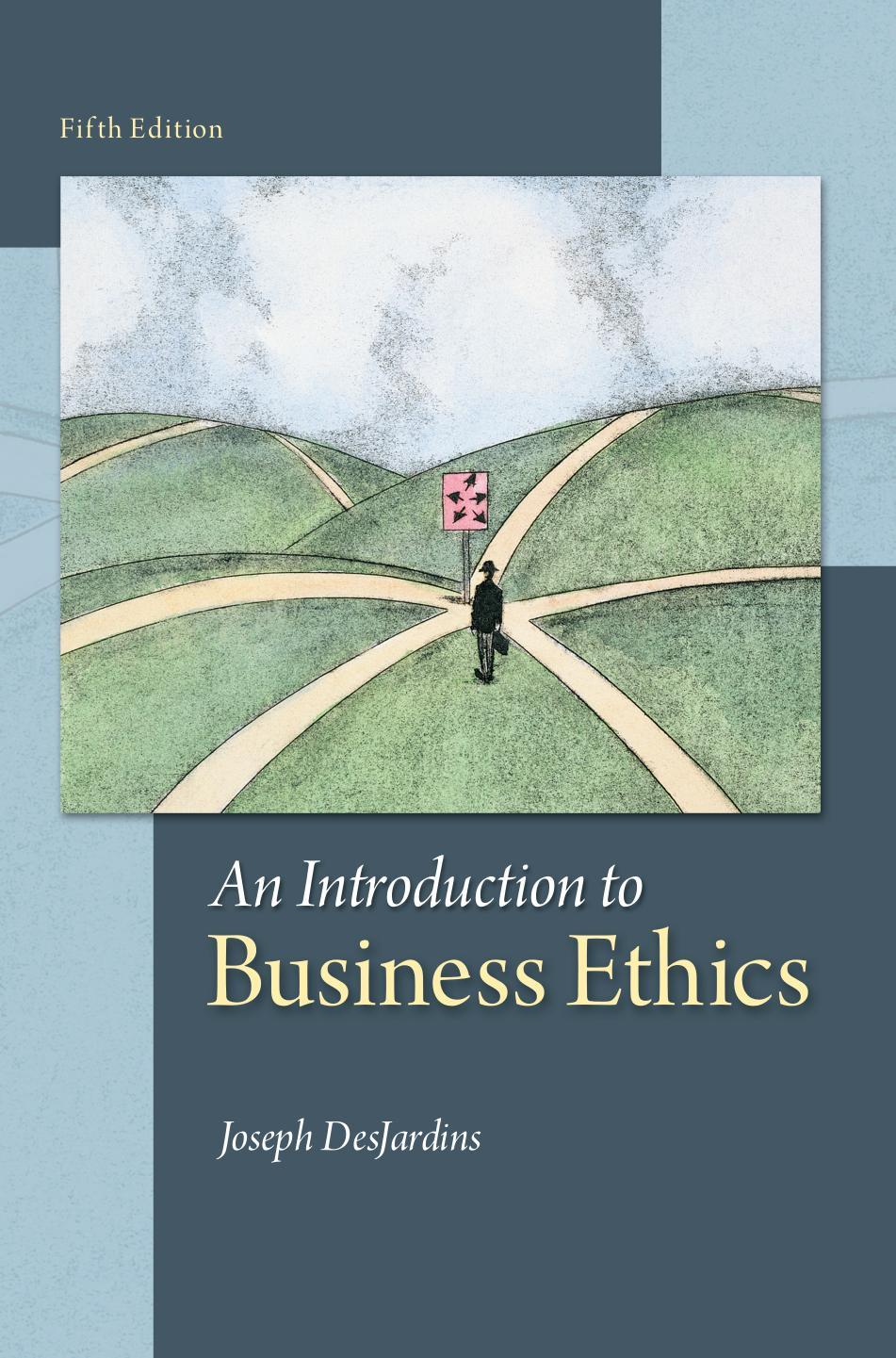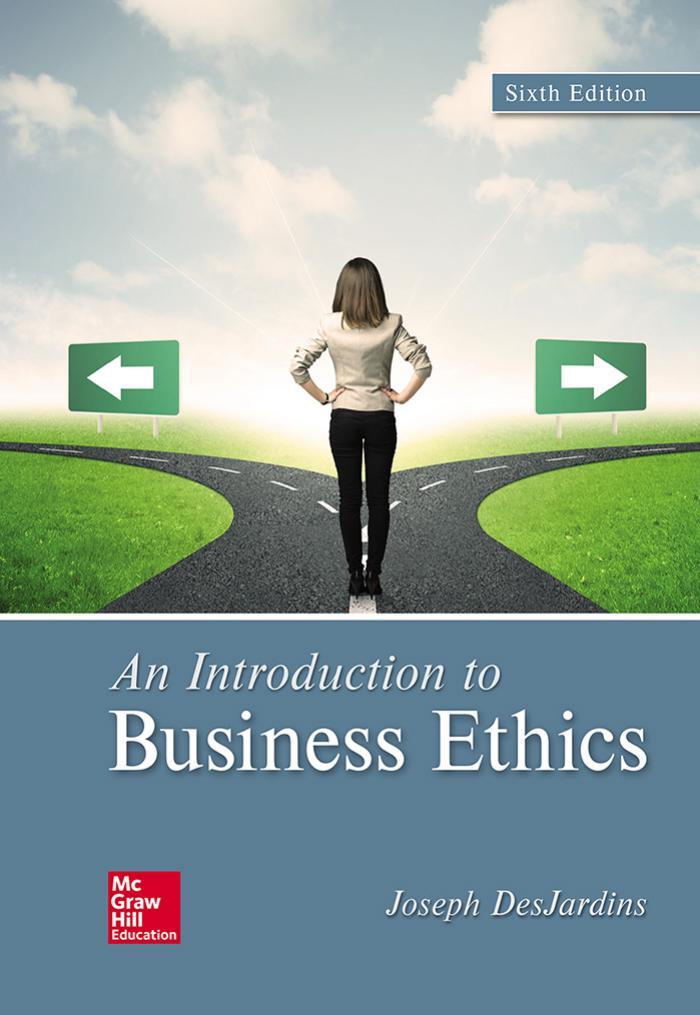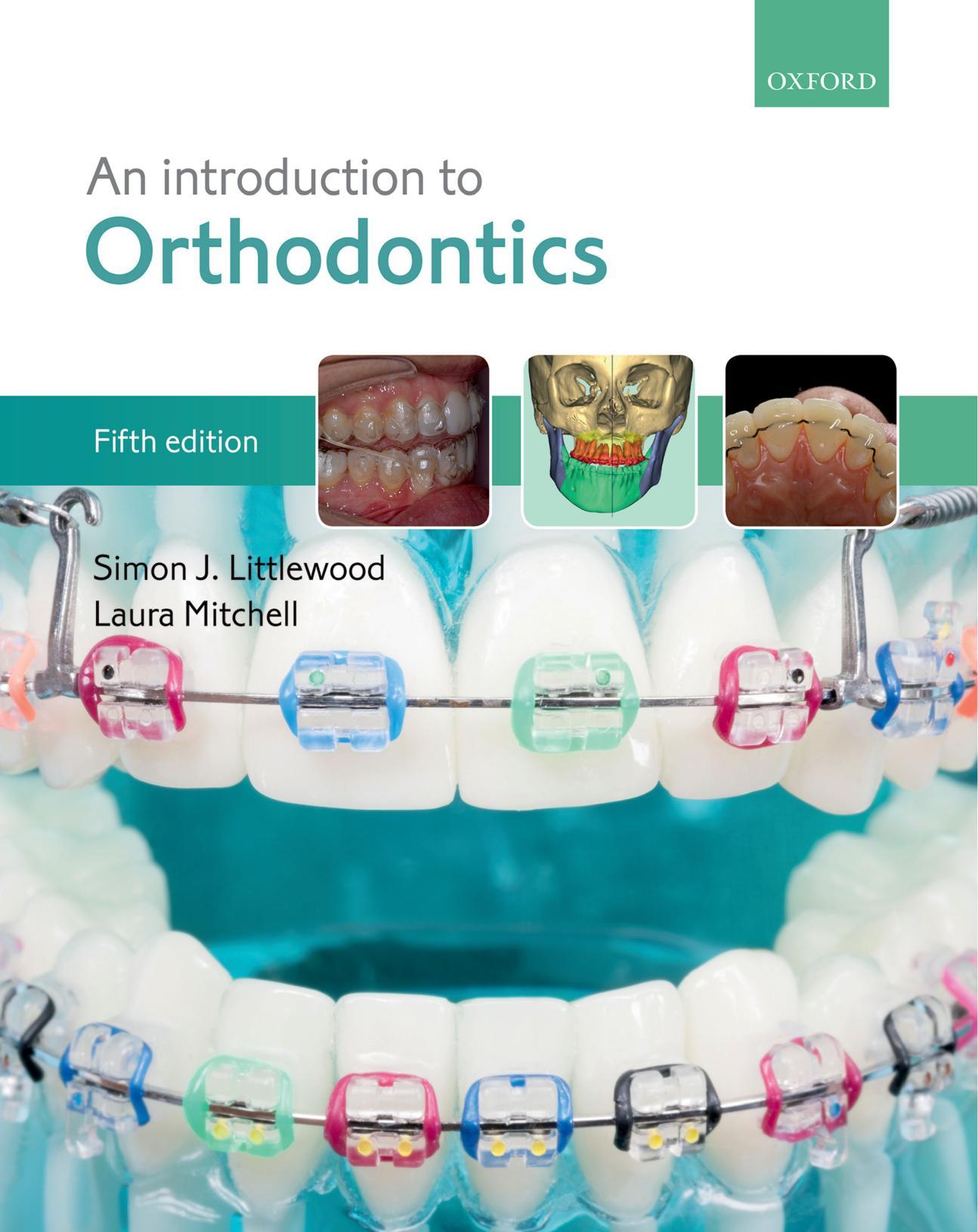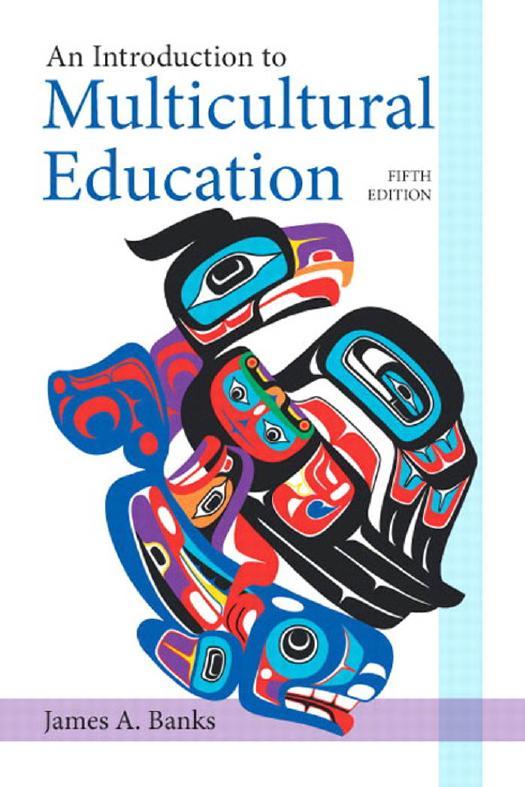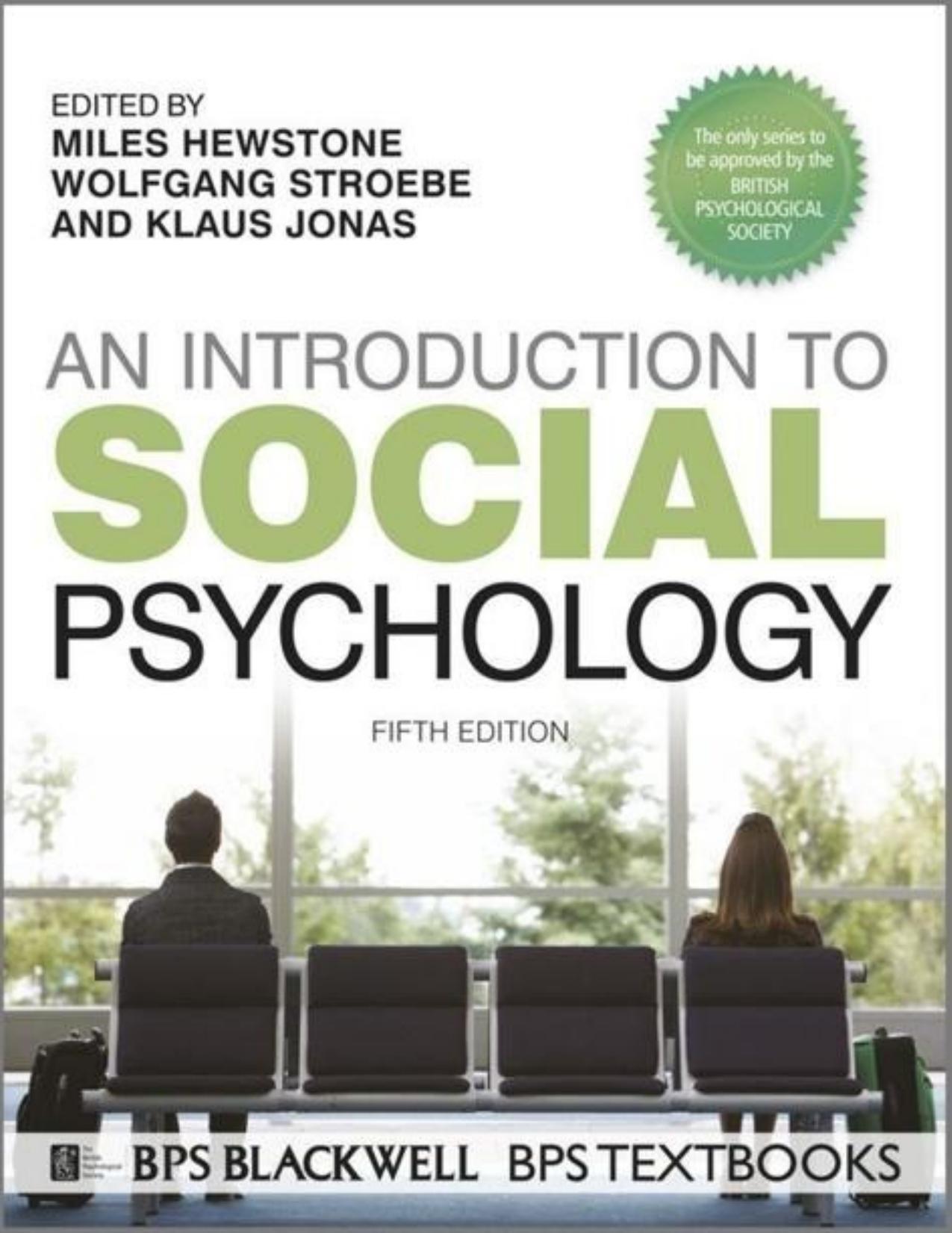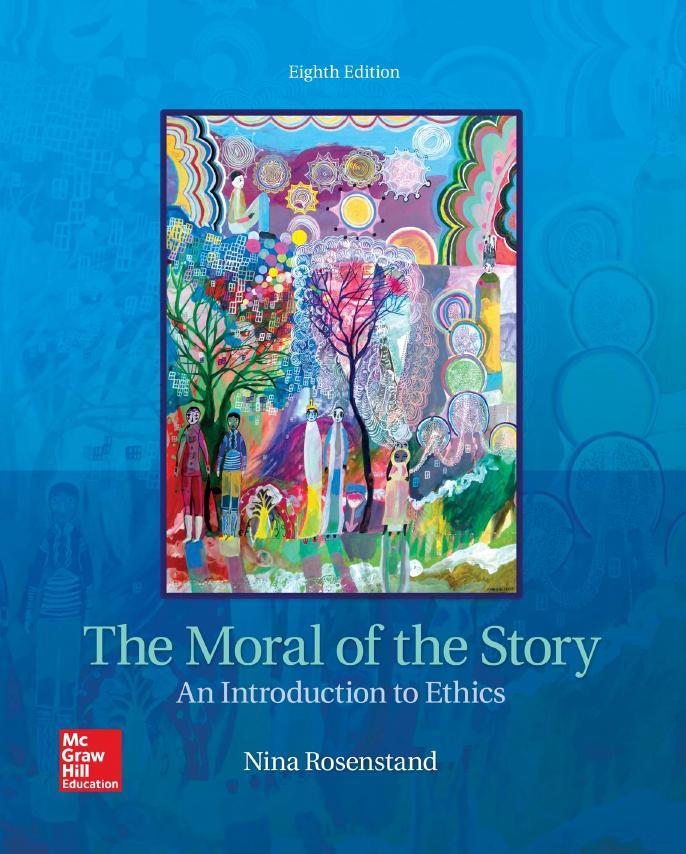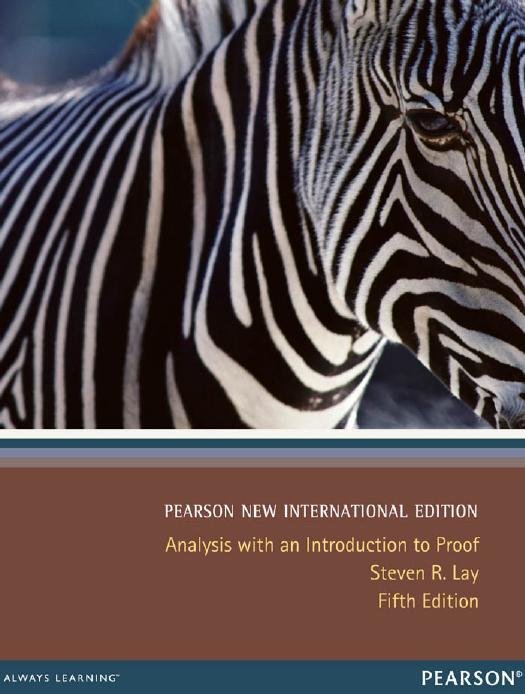Random
documents with unrelated content Scribd suggests to you:
most clearly in such thoughts as “This is blue”; “This is a flower”; “That light is the rising sun”; “That sound is the surf on a sandy shore.” In these we can plainly distinguish the element of presentation and the interpretative construction or analytic synthesis which is by the judgment identified with it.
{42}
LECTURE III THE RELATION OF LOGIC TO KNOWLEDGE
Meaningof“Form”
1. I spoke of the whole world, which we take to be real, as presented to us in the shape of a continuous judgment. It is the task of Logic to analyse the structure of this Judgment, the parts of which are Judgments.
The first thing is then to consider what sort of properties of Judgments we attend to in Logic. It is commonly said that Logic is a formal science; that is, that it deals with the form, and not with the content or matter of knowledge.
This word “form” is always meeting us in philosophy. “Species” is Latin for form, as εἶδος and ἰδεα [1] are Greek for form. The form of any object primarily means its appearance, that which the mind can carry away, while the object as a physical reality, as material, remains where it was. It need not mean shape as opposed to colour; that is a narrower usage. The Greek opinion was no doubt rooted in some such notion as that in knowing or remembering a thing the mind possessed its form or image without its matter. Thus the form
came to stand for the knowable shape or structure which makes a thing what it is, and by which we recognise it when we see it. This was its species or its idea, the “image,” as it is used in the phrase, “Let us make man in our own image.” So in any work of the hands {43} of man, the form was the shape given by the workman, and came out of his mind, while the matter was the stuff or material out of which the thing was made.
[1] [= “eidos” and “idea”. Tr.]
The moment we contemplate a classification of the sciences, we see that this is a purely relative distinction. There is no matter without form. If it was in this deep sense without form, it would be without properties, and so incapable of acting or being acted upon. In a knife the matter is steel, the form is the shape of the blade. But the qualities of steel again depend, we must suppose, upon a certain character and arrangement in its particles, and this is, as Bacon would have called it, the form of steel. But taken as purely relative, the distinction is good prima facie. Steel has its own form, but the knife has its form, and the matter steel can take many other forms besides that of a knife. Marble has its own form, its definable properties as marble (chemical and mechanical), but in a statue, marble is the matter, and the form is the shape given by the sculptor.
Now applying this distinction to knowledge in general, we see that all science is formal, and therefore it is no distinction to say that Logic is a formal science. Geometry is a formal science; even molecular physics is a formal science. All science is formal, because all science consists in tracing out the universal characteristics of things, the structure that makes them what they are.
The particular “form,” then, with which a science deals is simply the kind of properties that come under the point of view from which that science in particular looks at things. But a very general science is more emphatically formal than {44} a very special science. That is to say, it deals with properties which are presented in some degree by everything; and so in every object a great multitude of properties are disregarded by it, are treated by it as matter and not as form. In this sense Logic is emphatically “formal,” though not nearly so formal as it is often supposed to be. The subject-matter of Logic, then, is Knowledge qua Knowledge, or the form of knowledge; that is, the properties which are possessed by objects or ideas inso far asthey are membersoftheworldofknowledge. And it is quite essential to distinguish the form of knowledge in this sense from its matter or content. The “matter” of knowledge is the whole region of facts dealt with by science and perception. If Logic dealt with this in the way in which knowledge deals with it, i.e. simply as a process of acquiring and organising experience, then Logic would simply be another name for the whole range of science, history, and perception. Then there would be no distinction between logic and science or common sense, and in trying to ascertain, say, the wavelength of red light, or the cab-fare from Chelsea to Essex Hall, we should be investigating a logical problem. But we see at once that this is not what we mean by studying knowledge as knowledge. Science or common sense aims at a particular answer to each problem of this kind. Logic aims at understanding the type and principles both of the problem and of its answer. The details of the particular answer are the “matter of fact.” The type and principles which are found in all such particular answers may be regarded as the form of fact, i.e.that which makes the fact a fact in knowledge.
Jevons appears to me to make a terrible blunder at this {45} point. He says [1]—“One name which has been given to Logic, namely the Science of Sciences, very aptly describes the allextensive power of logical principles. The cultivators of special branches of knowledge appear to have been fully aware of the allegiance they owe to the highest of the sciences, for they have usually given names implying this allegiance. The very name of Logic occurs as part of nearly all the names adopted for the sciences, which are often vulgarly called the ‘ologies,’ but are really the ‘logics,’ the ‘o’ being only a connecting vowel or part of the previous word. Thus geology is logic applied to explain the formation of the earth’s crust; biology is logic applied to the phenomena of life; psychology is logic applied to the nature of the mind; and the same is the case with physiology, entomology, zoology, teratology, morphology, anthropology, theology, ecclesiology, thalattology, and the rest. Each science is thus distinctly confessed to be a special logic. The name of Logic itself is derived from the common Greek word λόγος, which usually means word, or the sign and outward manifestation of any inward thought. But the same word was also used to denote the inward thought or reasoning of which words are the expression, and it is thus probably that later Greek writers on reasoning were led to call their science ἐπιστήμη λογική, or logical science, also τέχνη λογική or logical art. [2] The adjective λογική, being used alone, soon came to be the name of the science, just as Mathematic, Rhetoric, and other names ending in ‘ic’ were originally adjectives, but have been converted into substantives.”
[1] ElementaryLessons, p. 6.
[2] [= “logos”, “episteme logike”, “techne logike” and “logike”. Tr.]
{46} This account of the connection between the name “Logic” and the terminations of the names of the sciences appears precisely wrong. Whatever may have been the exact meaning of the expression “Logic,” or “Logical curriculum,” [1] or “art,” or “science” when first employed, there can be no doubt that the word logical had a substantive reference to that about which the science or teaching in question was to treat. The term “logic,” therefore, corresponds not to the syllables “logy” in such a word as “Zoology,” but to the syllables “Zoo,” which indicate the province of the special science, and not its character as a science. Zoology means connected discourse (λόγος) about living creatures. Logic meant a curriculum, or science or art dealing with connected discourse. The phrase “Science of Sciences,” rightly interpreted, has the same meaning. It does not mean that Logic is a Science which comprises all the special sciences, but that Logic is a Science dealing with those general properties and relations which all sciences quasciences have in common, but omitting, as from its point of view matter and not form, the particular details of content by which every science answers the particular questions which it asks. It is wild, and most mischievous, to say that “every science is a special logic,” or that “biology is Logic applied to the phenomena of life.” This confusion destroys the whole disinterestedness which is necessary to true scientific Logic, and causes the logical student always to have his eye on puzzles, and special methods, and interferences by which he may teach the student of science how to perform the concrete labour of research. We quite admit that {47} a looker-on may sometimes see more of the game, and no wise investigator would contemn apriorithe suggestions of a student like Goethe, or Mill, or Lotze, because their author was not exclusively engaged in the observation of nature. But all this is secondary. The idea that Logic is
a judge of scientific results, able to pass sentence, in virtue of some general criterion, upon their validity and invalidity, arises from a deep-lying misconception of the nature of truth which naturally allies itself with the above confusion between Logic and the special sciences.
[1] πραγμάτεια [= pragmateia Tr.]. See Prantl, i. 545.
Therefore the relation between content or matter of knowledge, and the form which is its general characteristic as knowledge, is of this kind. We can either study the objects of knowledge directly as we perceive them, or indirectly, as examples of the way in which we know. As studied for their own sake, they are regarded as the matter or content in which the general form of knowledge finds individual realisation. In botany, for instance, we have a large number of actual plants classified and explained in their relation to one another. A botanist is interested directly in the affinities and evolution of these plants, and in the principles of biology which underlie their history. He pushes his researches further and further into the individual matters that come to light, without, as a rule, more than a passing reflection upon the abstract nature of the methods which he is creating as his work proceeds. He classifies, explains, observes, experiments, theorises, generalises, to the best of his power, solely in order to grasp and render intelligible the region of concrete fact that lies before him. Now while his particular results and discoveries {48} constitute the “form” or knowable properties of the plant-world as the object of botanical science, the science which inquires into the general nature of knowledge must treat these particular results as “mere matter”—as something with which it is not directly concerned, any more than the art which makes a statue is primarily and directly concerned with the chemical and mechanical properties
of marble. The “form” or knowable properties with which the general science of knowledge is directly concerned, consists in those methods and processes which the man of science, developing the modes in which common sense naturally works, constructs unconsciously as he goes along. Thus, not the nature and affinities of the plant-world, but classification, explanation, observation, experiment, theory, are the phenomena in virtue of which the organised structure of botanical science participates in the form of knowledge, and its objects become, in these respects, objects of logical theory.
Hence some properties and relations of objects, being the form or knowable structure of the concrete objects as a special department of nature, correspond to the mere matter, stuff, or content of Knowledge in general, while other properties and relations of objects, being their form or knowable structure as entering into a world of reality displayed to our intelligence, correspond to the form of Knowledge as treated of by a general inquiry into its characteristics, which we call Logic. It is just as the qualities or “forms” of the different metals of which knives can be made are mere matter or irrelevant detail when we are discussing the general “form” or quality of a good knife, {49} whatever its material. A reservation on this head appears in the following section.
FormofKnowledgedependentonContent
2. For the form of Knowledge depends in some degree upon its matter. It is very important to realise this truth; for if Logic is swamped by being identified with the whole range of special sciences, it is killed by being emptied of all adaptation to living intelligence. What is called Formal Logic par excellence in all its
shapes, whether antiquated as in Hamilton’s or Thomson’s Formal Laws of Thought, or freshly worked out on a symbolic basis as by Boole and others, has, it appears to me, this initial defect, when consideredas ageneraltheoryofLogic. As a contribution to such a theory, every method which will work undoubtedly has its place, and indicates and depends upon some characteristic of real thought. But in the central theory itself, and especially in so short an account of it as must be attempted in these lectures, I should be inclined to condemn all attempts to employ symbols for anything more than the most passing illustration of points in logical processes. All such attempts, I must maintain, share with the old-fashioned laws of Identity, Contradiction, and Excluded Middle the initial fallacy of representing a judgment by something which is not and cannot be in any way an adequate symbol of one. If, in order to get at the pure form of Knowledge, we restrict ourselves to very abstract characteristics in which all knowledge appears, very roughly speaking, to agree, and which can be symbolized for working purposes by combinations of signs which have not the essential properties of ideal contents, then we have ab initio substituted for the judgment something which is a very {50} abstract corollary from the nature of judgment, and may or not for certain purposes and within certain limits be a fair representative of it. We cannot and must not exclude from the form of Knowledge its modifications according to “matter,” and its nature as existing only in “matter.”
In fact, the peculiar “form” of everythingdepends in some degree on its “matter.” A statue in marble is a little differently treated if it is copied in bronze. A knife is properly made of steel; you can only make a bad one of iron, or copper, or flint, and you cannot make one at all of wax. Different matters will more or less take the same form, but only within certain limits. So it is in Knowledge. The nature
ofobjectsasKnowledge—for we mustremember that “form” in our sense is not something put into the “matter,” something alien or indifferent to it, but is simply its own inmost character revealed by the structural relations in which it is found capable of standing [1]— depends on the way in which their parts are connected together.
[1] The example of the marble statue may seem to contradict this idea; and no doubt the indifference of matter to form is a question of degree. But the feeling for material is a most important element in fine art; and in knowledge there is only a relative distinction between formal and material relations.
Let us compare, for example, the use of number in understanding objects of different kinds.
Suppose there are four books in a heap on the table. This heap of books is the object. We desire to conceive it as a whole consisting of parts. In order to do so we simply countthem “one, two, three, four books.” If one is taken away, there is one less to count; if one is added, there is one more. But the books themselves, as books, are not {51} altered by taking away one from them or adding one to them. They are parts indifferent to each other, forming a heap which is sufficiently analysed or synthesised by counting its parts.
But now instead of four books in a heap, let us think of the four sides of a square. Of course we can count them, as we counted the books; but we have not conceived the nature of the square by counting its sides. That does not distinguish it from four straight lines drawn anyhow in space. In order to appreciate what a square is, we must consider that the sides are equal straight lines, put together in a particular way so as to make a figure with four right angles; we must distinguish it from a figure with four equal sides,
but its angles not right angles, and from a four-sided figure with right angles, but with only its opposite sides equal; and note that if we shorten up one side into nothing, the square becomes a triangle, with altogether different properties from those of a square; if we put in another side it becomes a pentagon, and so on.
These two things, the heap of books and the square, are prima facie objects of perception. We commonly speak of a diagram on a blackboard or in a book as “a square” if we have reason to take it as approximately exact, and as intended for a square. But on looking closer, we soon see that the “matter,” or individual attributes, of each of these objects of our apprehension demands a different form of knowledge from that necessary to the other. The judgment “This heap of books has four books in it” is a judgment of enumerative perception. The judgment “Thesquare has four sides” is a judgment of systematic necessity.
{52} Why did we not keep the two judgments in the same logical shape? Why did we say “Thisheap” and “Thesquare”? Why did we not say “this” in both propositions, or “the” in both propositions? Because the different “matter” demands this difference of form. Let us try. “The heap of books has four books in it.” Probably we interpret this proposition to mean just the same as if we had said “This heap.” That is owing to the fact that the judgment naturally occurs to us in its right form. But if we interpret “The heap” on the analogy of our interpretation of “The square,” our judgment will have become false.
It will have come to mean “Every heap of books has four books in it,” and a judgment of perception will not bear this enlargement. The
subject is composite, and one, the most essential of its elements, is destroyed by the change from “this” to “the.”
Let us try again. Let us say “This square has four sides.” That is not exactly false, but it is ridiculous. Every square must have four sides, and by saying “this square” we strongly imply that foursidedness is a relation of which we are aware chiefly, if not exclusively, in the object attended to in the moment of judging, simply through the apprehension of that moment. By this implication the form of the judgment abandons and all but denies the character of systematic necessity which its content naturally demands. It is like saying, “It appears to me that in the present instance two and two make four.” The number of sides in a square, then, is not a mere fact of perception, while the number of books in a heap is such a fact.
But you may answer by suggesting the case that an {53} uninstructed person—say a child, with a square figure before him, and having heard the name square applied to figures generally resembling that figure, may simply observe the number of sides, without knowing any of the geometrical properties connected with it; will he not then be right in saying, “This square has four sides”?
Certainly not. In that case he has no right to call it a square. It would only be a name he had picked up without knowing what it meant. All he has the right to say would be, “This object” or “This figure has four sides.” That would be a consistent judgment of mere perception, true as far as it went. It is always possible to apprehend the more complex objects of knowledge in the simpler forms; but then they are not apprehended adequately, not as complex objects. It is also possible to apply very complex forms of knowledge to very simple objects. Most truths that can be laid down quite in the
abstract about a human mind could also be applied in some sense or other to any speck of protoplasm, or to any pebble on the seashore. And every simple form of knowledge is always being pushed on, by its own defects and inconsistencies, in the direction of more complex forms.
So far I have been trying to show that objects are capable of being different in their nature as knowledge as well as in their individual properties; and that their different natures as knowledge depend on the way in which their parts are connected together. We took two objects of knowledge, and found that the mode of connection between the parts required two quite different kinds of judgment to express them. Let us look at the reason of this.
{54} TherelationofPartandWhole
3. The relation of Part and Whole is a form of the relation of Identity and Difference. Every Judgment expresses the unity of some parts in a whole, or of some differences in an Identity. This is the meaning of “construction” in knowledge. We saw that knowledge exists in judgment as a construction (taking this to include maintenance) of reality.
The expression whole and parts may be used in a strict or in a lax sense.
In a strict sense it means a whole of quantity, that is, a whole considered as made up by the addition of parts of the same kind, as a foot is made up of twelve inches. In this sense the whole is the sum of the parts. And even in this sense the whole is represented within every part by an identity of quality that runs through them all. Otherwise there would be nothing to earmark them as belonging to
the particular whole or kind of whole in question. Parts of length make up a whole of length, parts of weight a whole of weight, parts of intensity a whole of intensity, in so far as a whole of intensity is quantitative, which is not a perfectly easy question. Wholes like these are “Sums” or “Totals”. The relation of whole to part in this sense is a very simple case of the relation of differences in an identity, but for that very reason is not the easiest case to appreciate. The relation is so simple that it is apt to pass unnoticed, and in dealing with numerical computation we are apt to forget that in application to any concrete problem the numbers must be numbers of something having a common quality, and that the nature of this something may affect the result as related to real fact, though not as a conclusion from pure {55} numerical premisses. In a whole of pure number the indifference of parts to whole reaches its maximum. The unit remains absolutely the same, into whatever total of addition it may enter.
In a whole of differentiated members, such as a square, all this begins to be different. A side in a square possesses, by the fact of being a side, very different relations and properties from those of a straight line conceived in isolation. In this case the whole is not made up merely by adding the parts together. It is a geometrical whole, and its parts are combined according to a special form of necessity which is rooted in the nature of space. Speaking generally, the point is that parts must occupy certain perfectly definite places as regards each other. You cannot make a square by merely adding three right angles to one, nor by taking a given straight line and adding three more equal straight lines to its length. You must construct in a definite way so as to fulfil definite conditions. The identity shows itself in the different elements which make it up, not as a mere repeated quality, but as a property of contributing, each
part in a distinctive way, to the nature of the whole. Such an identity is not a mere total or sum, though I imagine that its relations can be fully expressed in terms of quantity, certain differentiated objects or conceptions being given (e.g.line and angle).
I take a further instance to put a sharp point upon this distinction. The relation of whole and parts is nowhere more perfect, short of a living mind, than in a work of art. There is a very fine Turner landscape now [1] in the “Old {56} Masters” Exhibition at Burlington House—the picture of the two bridges at Walton-on-Thames. The picture is full of detail—figures, animals, trees, and a curving riverbed. But I am told that if one attempts to cut out the smallest appreciable fragment of all this detail, one will find that it cannot be done without ruining the whole effect of the picture. That means that the individual totality is so welded together by the master’s selective composition, that, according to Aristotle’s definition of a true “whole,” if any part is modified or removed the total is entirely altered, “for that of which the presence or absence makes no difference is no true part of the whole.” [2]
[1] February 1892. [2] Poetics, 8
Of course, in saying that the part is thus essential to the whole, it is implied that the whole reacts upon and transfigures the part. It is in and by this transformation that its pervading identity makes itself felt throughout all the elements by which it is constituted. As the picture would be ruined if a little patch of colour were removed, so the little patch of colour might be such as to be devoid of all value if seen on a piece of paper by itself. I will give an extreme instance, almost amounting to a tour de force, from the art of poetry, in illustration of this principle. We constantly hear and use in daily life
the phrase, “It all comes to the same thing in the end.” Perhaps in the very commonest speech we use it less fully, omitting the word “thing”; but the sentence as written above is a perfectly familiar platitude, with no special import, nor grace of sound or rhythm. Now, in one of the closing stanzas of Browning’s poem Any Wife to Any Husband, this sentence, only modified {57} by the substitution of “at” for “in,” forms an entire line. [1] And I think it will generally be felt that there are few more stately and pathetic passages than this in modern poetry. Both the rhythm and sonorousness of the whole poem, and also its burden of ideal feeling, are communicated to the line in question by the context in which it is framed. Through the rhythm thus prescribed to it, and through the characteristic emotion which it contributes to reveal, the “whole” of the poem reacts upon this part, and confers upon it a quality which, apart from such a setting, we should never have dreamed that it was capable of possessing.
[1] In order to remind the reader of the effect of this passage it is necessary to quote a few lines before and after—
“Re-issue words and looks from the old mint, Pass them afresh, no matter whose the print, Image and superscription once they bore! Re-coin thyself and give it them to spend,— It all comes to the same thing at the end, Since mine thou wast, mine art and mine shalt be, Faithful or faithless, sealing up the sum Or lavish of my treasure, thou must come Back to the heart’s place here I keep for thee!”
We are not here concerned with the peculiar “aesthetic” nature of works of art, which makes them, although rational, nevertheless unique individuals. I only adduced the above examples to show, in unmistakable cases, what is actually meant when we speak of “a whole” as constituted by a pervading identity which exhibits itself in the congruous or co-operating nature of all the constituent parts. In wholes of a higher kind than the whole of mere quantity the parts no longer repeat each other. They are not merely distinct, {58} but different. Yet the common or continuous nature shows itself within each of them.
The parts of a sum-total, taking them for convenience of summation as equal parts, may be called units; [1] the parts of an abstract system, such as a geometrical figure, may be called elements (I cannot answer for mathematical usage), and the parts of a concrete system, an aesthetic product, a mind, or a society, might be called members.
[1] A unit of measurement implies in addition that it has been equated with some accepted standard. If I divide the length of my room into thirty equal parts, each part is a “unit” in the sum-total; but I have not measured the room till I have equated one such part with a known standard, and thus made it into a unit in the general system of length equations.
But every kind of whole is an identity, and its parts are always differences within it.
NatureofKnowledge
4. It will be well to sum up here what we have learnt of the nature of knowledge in general, before passing to the definition and
classification of Judgment.
Knowledge is always Judgment. Judgment is constructive, for us, of the real world. Constructing the real world means interpreting or amplifying our present perception by what we are obliged to think, which we take as all belonging to a single system one with itself, and with what constrains us in sense-perception, and objective in the sense that its parts act on each other independently of our individual apprehension, and that we are obliged to think them thus. The process of construction is always that of exhibiting a whole in its parts, i.e. an identity in its differences; that is to say, it is always both analytic and synthetic. The objects of knowledge differ in the mode of relation between their {59} parts and the whole, and thus give rise to different types of judgment and inference; and this difference in the form of knowledge is a difference in the content of Logic, which deals with the objects of experience only from the point of view of their properties as objects in an intellectual world.
Conclusion
5. I hope that these general lectures, which, as I am quite aware, have anticipated the treatment of many difficult questions which they have not attempted to solve, have been successful in putting the problem of Logic before us with some degree of vividness. If this problem were thoroughly impressed upon our minds, I should say that we had already gained something definite from this course of study. The points which I desire to emphasise are two.
(1) I hope that we have learned to realise the world of our knowledge as a living growth, sustained by the energy of our intelligence; and to understand that we do not start with a readymade world in common, but can only enter upon the inheritance of
science and civilisation as the result of courage, labour, and reasonable perseverance; and further, that we retain this inheritance just as long as our endurance and capacity hold out, and no longer.
And (2) I have attempted to make clear that this living growth, our knowledge, is like the vegetable or animal world in being composed of infinite minor systems, each and all of which are at bottom the same function with corresponding parts or elements, modified by adaption to the environment. So that the task of analysing the form of judgment bears a certain resemblance to that of analysing the forms of plants. Just as from the single cell of the undifferentiated Alga, to {60} the most highly organised flower or tree, we have the same formation, with its characteristic functions and operations, so from the undifferentiated judgment, which in linguistic form resembles an ejaculation or interjection, to the reasonable systems of exact or philosophical science, we find the same systematic function with corresponding elements.
But the world of knowledge has a unity which the world of organic individuals cannot claim; and this whole system of functions is itself, for our intelligence, approximately a single function or system, corresponding in structure to each of its individual parts, as though the plant world or animal world were itself in turn a plant or animal. We cannot hope to exhaust the shapes taken by the pervading fundamental function of intelligence. We shall only attempt to understand the analogies and differences between some few of its leading types.
{61}
LECTURE IV TYPES OF JUDGMENT AND THE GENERAL CONDITIONS INVOLVED IN ASSERTION
CorrespondencebetweentypesofJudgmentandnatureofobjects asKnowledge
1. The question of correspondence between the types of Judgment and the orders of Knowledge was really anticipated in discussing the relation between the content and the form of knowledge. We saw that the content or matter and nature known determines on the whole the form or method of knowledge by which it can be known.
I give a few cases of this correspondence, not professing to complete the list. We should accustom ourselves to think of these forms as constituting a progression in the sense that each of them betrays a reference to an ideal of knowledge which in itself it is unable to fulfil, and therefore inevitably suggests some further or divergent form. And the defect by which the forms contradict the ideal, is felt by us as a defect in their grasp of reality, in their presentation of real connections.
“Impersonal”Judgment
a. We think of the judgment as predicating an ideal content of a subject indicated in present perception. But there are judgments which scarcely have an immediate subject at all, such as “How hot!” “Bad!” “It hurts!” In the judgments thus represented the true subject is some {62} undefined aspect of the given complex presentation. Of course the words which we use are not an absolutely safe guide to the judgment—they may be merely an abbreviation. But there are typical judgments of this kind in which we merely mean to connect
some namable content with that which can only be defined as the focus of attention at the moment. Such judgments might be called predications of mere quality. The only link by which they bind their parts into a whole is a feeling referred to our momentary surroundings. A mere quality, if not defined or analysed, or a feeling of pleasure or pain, is the sort of object which can be expressed in such a judgment.
PerceptiveJudgment
b. Then we have the very wide sphere of perceptive judgment, which we may most conveniently confine to judgments which have in the subject elements analogous to “This,” “Here,” “Now.” Such particles as these indicate an effort to distinguish elements within the complex presented. They have no content beyond the reference to presentation, and, in “here” and “now,” an implication that the present is taken in a particular kind of continuum. Otherwise they mean nothing more or other than is meant by pointing with the finger. We may or may not help out a “subject” of this kind by definite ideas attached to it as conditions of the judgment. If we do, we are already on the road to a new form of knowledge, incompatible with the judgment of perception. For so long as we keep a demonstrative, spatial or temporal, reference in the thought, the subject of judgment is not cut loose from our personal focus of presentation. And as the existence of such a focus is undeniable, we are secure against criticism so far as the {63} content of the subject is concerned. But if we begin to specify it, we do so at our peril.
Such judgments as these have been called “Analytic judgments of sense.” [1] The term is not generally accepted in this meaning, but is conveniently illustrative of the nature of these judgments. It is
intended to imply that they are a breaking up and reconstruction of what, in our usual loose way of talking, is said to be given in senseperception. They remain on the whole within the complex of “that which” is presented.
[1] Mr. F.H. Bradley, PrinciplesofLogic, p. 48.
From the point of view which we have taken, such judgments are not confined to what we think it worth while to say, but are the essence of every orderly and objective perception of the world around us. In a waking human consciousness nothing is unaffirmed.
We have no other term than perception to express the process which is employed in scientific observation and experiment. But it is plain that so soon as the judgment that refers to “This” is modified through the inevitable demand for qualification by exact ideas—“This hurts me,” “What hurts you?” “This old sprain, at the pace we are walking”—a conflict of elements has arisen within the judgment. And as commonplace perception passes into scientific observation, the qualifying ideas, on which truth and relevancy depend, dwarf the importance of the “this,” and ultimately oust it altogether. That is a simple case in which the ideal of knowledge and the nature of reality operate within the judgment to split asunder its primitive form. The subject as expressed by a pure demonstrative refuses to {64} take account either of truth, i.e.consistency with knowledge as a whole, or of relevancy, i.e. consistency with the relation involved in the particular predication that may be in question. Our commonplace perception halts between these two extremes. It deals with the world of individual objects and persons, which, being already systematised according to our current observations and interests, has, so long as we keep to its order, a sufficient degree of truth and
